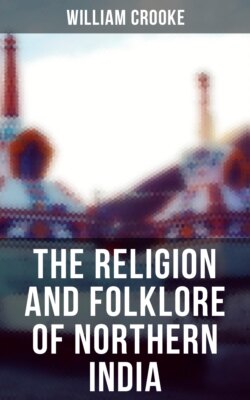Читать книгу The Religion and Folklore of Northern India - William Crooke - Страница 9
На сайте Литреса книга снята с продажи.
Godlings Pure and Impure.
ОглавлениеTable of Contents
These godlings fall into two well marked classes—the “pure” and the “impure.” The former are, as a rule, served by priests of the Brâhman castes or one of the ascetic orders: their offerings are such things as are pure food to the Hindu—cakes of wheaten flour, particularly those which have been still further purified by intermixture with clarified butter (ghî), the most valued product of the sacred cow, washed rice (akshata) and sweetmeats. They are very generally worshipped on a Sunday, and the officiating high-caste priest accepts the offerings. The offerings to the “impure” godlings contain articles such as pork and spirits, which are abomination to the orthodox Hindu. In the Central Indian hills their priest is the Baiga, who rules the ghosts and demons of the village and is always drawn from one of the Drâvidian tribes. In the plain country the priest is a non-Aryan Chamâr, Dusâdh, or even a sweeper or a Muhammadan Dafâli or drummer. No respectable Hindu will, it is needless to say, partake of a share of the food consecrated (prasâd) to a hedge deity of this class. Much of the worship consists in offering of blood. But the jungle man or the village menial of the plains can seldom, except in an hour of grievous need, afford an expensive animal victim, and it is only when the village shrine has come under the patronage of the official priests of the orthodox faith, that the altar of the goddess reeks with gore, like those of the Devîs of Bindhâchal or Devî Pâtan.
But as regards the acceptance of a share of the offering the line is often not very rigidly drawn. As Mr. Ibbetson writing of the Panjâb says:6 “Of course, the line cannot always be drawn with precision, and Brâhmans will often consent to be fed in the name of a deity, while they will not take offerings made at his shrine, or will allow their girls, but not their boys, to accept the offering, as, if the girls die in consequence, it does not much matter.” In fact, as we shall see later on, the Baiga or devil priest of the aboriginal tribes, is gradually merging into the Ojha or meaner class of demon exorciser, who calls himself a Brâhman and performs the same functions for tribes of a somewhat higher social rank.
